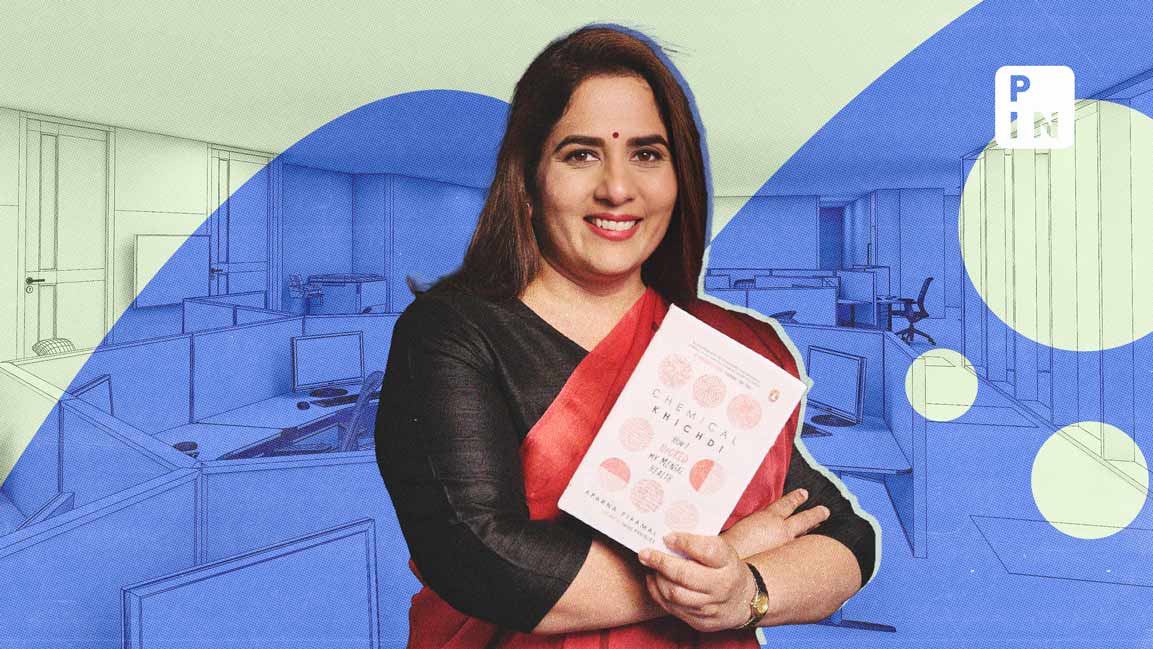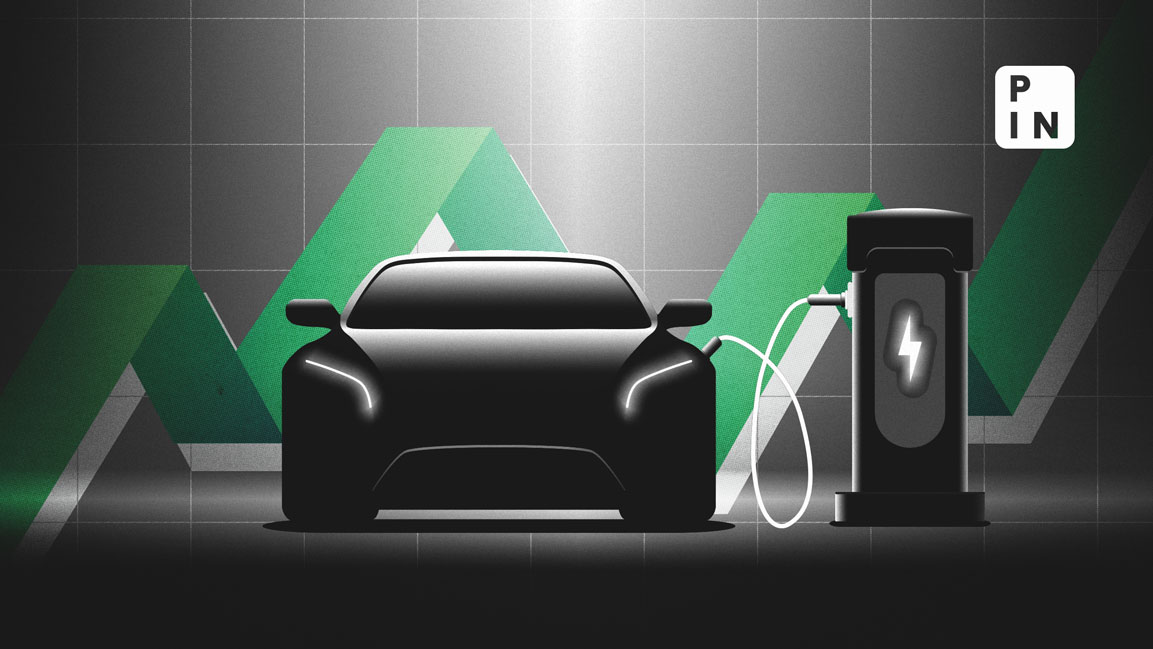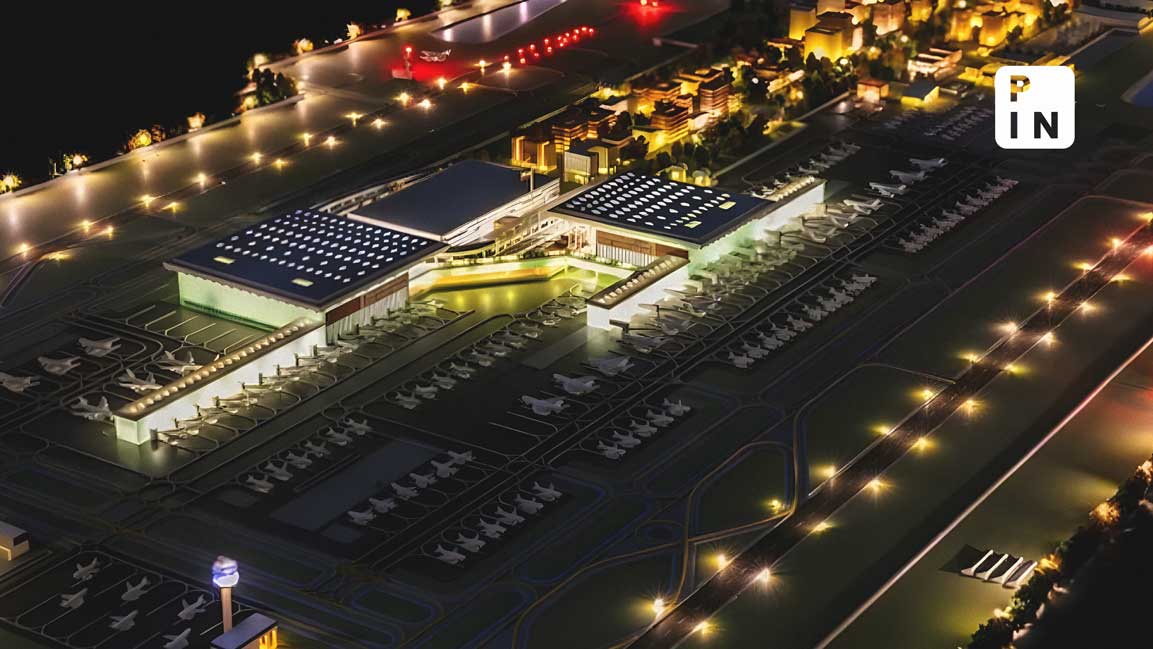- | 5:00 pm
Aparna Piramal Raje | Driving the shift to a more humane workplace
Workplace design expert Aparna Piramal Raje sheds light on evolving priorities when designing office spaces in a post-covid era and why multitasking is not easy to do or even good for the brain

Thoughtful employers invest in making workplaces more humane and collaborative, recognizing that such investments go beyond mere expenses, says workplace design expert Aparna Piramal Raje.
In an interview with Press Insider, Raje sheds light on the evolving priorities of employers when designing office spaces in a post-covid era and lists some of the best designed offices in India that she’s been to.
Raje also discusses the need to align tangible and intangible factors – including culture, policies, and the physical workplace – to boost managerial and staff productivity.
The noted public speaker on business, who is also the author of part memoir and part self-help guide Chemical Khichdi: How I Cracked my Mental Health, addresses the pitfalls of multitasking, explaining why it is not easy to do or even good for the brain and overall productivity.
Edited excerpt:
How have office design priorities evolved since the pandemic?
People are now viewing work practices differently. One realization is the importance of providing meeting and collaborative spaces, which were often an afterthought, especially in small companies. Previously, companies would fit in workstations and a couple of meeting rooms, but now collaboration and meeting are seen as key reasons to come to the office. Additionally, there’s a need for private spaces for calls, resulting in diverse work settings, including various meeting rooms and phone booths. At Dream11, I even saw a sports track in their office to conduct walking meetings. So people are getting more innovative around this concept of getting people to collaborate, and to provide for that because that’s one of the main reasons to actually come to work.
Another trend is the focus on employee wellness. Companies are realizing that employees want a more humane environment, and not just a clinical space. At the SAP Labs office in Bangalore, there are about 750-800 trees and indoor courtyards where people can take a break, connect with nature, and rejuvenate. They also have various wellness measures in place. Thoughtful employers view this focus on employees as strategic, not just an expense, while investing in making the workplace more humane and collaborative.
As sustainability becomes increasingly crucial, what are some of the innovative eco-friendly practices that are being integrated into modern office designs?
The interesting thing about sustainability is that it’s not a question of practices but a question of intent. Are you fundamentally looking to make your office green from the beginning or are you just plastering it on at the end as a device or a measure. I was really impressed by the building of the Ministry of New and Renewable Energy, which you’d think would be very green. But it’s actually a net energy positive building, so the building actually generates more electricity and energy than it consumes. It’s been able to do that through various ways like instaling solar energy panels, and other ways to actually save on energy, to insulate the building, and use the right type of materials. Sustainability is a bit like going on a diet. You can’t expect one silver bullet to come and meet all your needs. When we try to lose weight, we do many things, right? We look at our intake, our energy expenditure, we look at consumption, we count our calories, look at our sleep. Similarly, you have to look at sustainability from a strategic perspective. I want to reiterate the point about the SAP Labs office, the fact that they had so many trees was interesting in the interest of their employees and sustainability. They actually had a whole program in place to maintain those 750-800 trees.
In your experience, how can the design of a workspace influence or enhance employee productivity?
Productivity is a function of many things and the way I look at an office is that it enhances not just an employee’s productivity but also looks at the well-being of the organization as a whole. If you align these, then you get really good results. Every organization has a different culture and every office has to respect that. If the culture, space, and people are aligned, then you get the outcome you want. This one office that I went to, they had a policy that said, “Work the way you want to.” They had spaces where employees could themselves choose where they wanted to sit. They had a lot of flexible options, including in the hours they worked as the office was enabled with the right technology to support this. The mindset of the managers was also like that. You need to align all tangible and intangible factors, the culture, the policies, the physical workplace, all of these things have to come together to actually get that productivity boost.
If you were to highlight some of the best office designs in India, which would make your top list, and what unique elements set them apart?
Let’s start with the office of Boston Consulting Group in Gurugram. It’s a large multi-national consulting service in the business of thinking, providing ideas and solutions, and intellectual output to their clients. They used design thinking to come up with a really interesting office because they said that since they offer design thinking services to their clients, they wanted to do something like that for themselves. They looked at a day in the life of a BCGer: what does the average BCG employee do every day? They studied lots of people like that, got lots of data, and based on that came up with really cool designs. It’s not that everything is funky and wild or anything like that, but they actually made places where it became easier to think. They had hexagonal tables rather than round tables because, apparently, that is the most conducive for a discussion. They had brainstorming rooms as well as quiet spaces where people could work; obviously, they had a lot of workstations, a cafe, and a wellness area. What I liked was not just space but the approach, the thinking. There have been some really funky offices that I have liked, one has had a slide in it, one has a racing track, many of these companies have these cool things in the office.
The other office that I really liked was an architecture firm called Space Matrix, in Gurugram. The office doesn’t look like an office at all. I call it the ‘Unoffice’. You walk in thinking it could be a restaurant or a cafe. They have a cafe at the heart of it, but they also have an amphitheater where people can sit and have presentations. They have desks where people can work, but then they also have extremely quiet areas. Then they have dining table-style desks where people can collaborate. So the whole space doesn’t feel like a conventional office, and that’s one of the reasons why I like it.
Then I went to see the office of YourDost, a mental health startup in Bangalore, and they had a dog in there. The dog, called Penny, belongs to the founder, and she comes in pretty much every day and is basically the office pet, who everyone likes to have around. I had been to over a hundred offices, and I hadn’t seen a pet in the office that was officially there. I hope I see more of those in the future because they are a good stress-buster for everybody.
As mental health awareness is taking centre stage in some office discourses and policies, how can office spaces impact an employee’s mental health?
In psychologist A.H. Maslow’s ‘Hierarchy of Needs’, he came up with this pyramid of needs that all human beings have. At the bottom there are physiological needs like getting shelter, clothing, food, and then it goes higher and higher. The same hierarchy of needs applies to our mental health in office. When it comes to basic needs, we need to feel secure, that we have ventilation, air circulation, light, that we are not harassed, especially if you’re a woman, then not sexually harassed at work. You have this basic safety and comfort that an office provides and, unfortunately, most offices don’t provide that. The higher order needs are to be social, to connect with others, to be collaborative. So to have offices that encourage that and allow people to connect, to have transparency in the way they work.
Then, further, as Maslow mentions, lies the area of self-actualization, where you are coming to the office because it gives you some purpose, some meaning. It’s not just a job and not just a salary. You’re coming there because you want to see some part of your personal mission or goal reflected in the work that you do. In that case, where the office plays a major role in terms of wellbeing is in the culture of the space and making sure that the space is not a toxic one but a positive one. The culture of the space is then reflected in the design of the space. Whether you’re looking at basic human needs, the design needs to reflect that or you’re looking at the needs higher up in the pyramid, the design needs to reflect that.
Your book, Chemical Khichdi, is related to self-help therapies. Could you share effective ways for employees and employers to battle anxiety at workplaces?
That’s a whole conversation in itself and I am glad you raised this question. It’s important for both employees and employers to understand that they have a role to play when it comes to anxiety in the workplace. It’s not just the question that the employer is stressing out the employee with a lot of work, deadlines, and burnout, and then telling the employee to go do a yoga class to deal with it. That’s not the right paradigm, nor the right equation. When it comes to mental health in the workplace, there are a lot of stakeholders but for the sake of argument let’s just concentrate on two: the employee and the manager.
It is important for the employee to be aware of what they are going through, and to be able to advocate for themselves. I have had people on my team who have told me on a workday that they are feeling anxious and I know that they live with anxiety. So the person sends me a text saying that they won’t be able to work today, but also tell me how they are going to manage their schedule so that the workload doesn’t get too affected.
I like that because the other option is that the person disappears for a day or two, and I have no idea where they are; they are working remotely, but I can’t connect with them, and I don’t know what’s going on, which is all stressful and unproductive at the end of the day for everyone.
But if that person is on top of it, and can say that they need the time off before the situation escalates, then of course I am going to be accommodating and empathetic, and make sure that the deliverables happen because I know that that person has a track record of delivering and meeting deadlines.
Employees need to be aware and advocate, while employers need to provide psychological safety and accommodation. The person obviously trusts me enough to ask me for some time, and I am saying yes, it’s fine. That relationship has to be there.
Post-covid, employees in knowledge-based organizations find remote/flexible work more favorable for a better work-life balance, though employers want them back in office. Which side of the divide are you on, and why?
An employer, whether in a startup, a mid-sized firm or a large-sized company, wants people to come back office so that they can collaborate, while employees want to have more flexibility in their schedule and avoid a commute. So I can see both sides of the story. The hybrid work model is the way forward. It’s important for people to have flexibility. I have seen people who wake up early and do a couple of hours of work at home, and then go and do some yoga, have breakfast, spend some leisure time, and then reach office much later by 11:30am. It’s not that they haven’t been working; it’s just that they have more flexibility about how they want to structure their day. The company should be adaptive to our work styles.
What’s also very important is for a company to be thoughtful and intentional about how they conduct meetings. Does everybody have to be there? Are there pre-reads that are sent beforehand? Is there documentation sufficiently before and after the meetings? If people are more intentional about meetings, then you probably don’t need to attend as many meetings in person as you think you do. Companies need to be aware that there is a new social contract between employees and employers, and people need to be more thoughtful and leverage technology. Otherwise people are in the situation where they are going to work, but still have their Zoom calls that go on.
Do workplace designs play a role in an employee’s willingness to return to office?
Hugely. I could see that when I had gone to SAP Labs, where they were really trying to use the office as a way to try and get people back to work. Obviously, making an investment into an office is one way of making sure that people come back to work.
Being a woman, there are multitasking superpowers we all have. What would be an ideal workplace for women, keeping in mind their well-being? Could you name some companies that are great for women employees, and should be examples for other employers while they plan workplace designs and environment?
To be honest, I would say that this is one area that hasn’t come up specifically when we have looked at office spaces. People have said that even though they are a very diverse and inclusive organization, they have not really specified a design while looking at the women in the workforce. I will say that having open cabins, transparency in private spaces is better for women in terms of avoiding sexual harassment at workplaces, rather than having closed spaces or areas that are opaque. Otherwise I would say that it applies to women and men both, perhaps more so to women, that the need for flexibility is very important. One woman that I had interviewed said that there is no point being stressed out and delivering the job, as it’s not productive. There is a need to have spaces where people can think quietly, where they can take a break and refresh themselves, to have more variety in work settings and more flexibility. Bigger companies obviously find that easier to do, but even smaller companies like Space Matrix can provide that sort of space. Women multitask, but I don’t think multitasking is easy to do or even good for the brain. The ability to have spaces to recharge yourself and to have policies that support flexible working is the biggest thing an organization can do for women.
You recently gave a workshop on Lego as a creative way to enhance team building. What were the key takeaways?
I’ve conducted several Lego workshops and in this particular one, we asked a team to explore their wellbeing through Lego. These people knew each other well but discovered new things about each other. It gave them space to be vulnerable about their feelings at work, especially for men, which can be challenging to admit in front of their boss. But that is the conversation we had. It’s democratic, as everyone gets a chance to speak without being overshadowed. It’s creative, letting you visualize problems and solutions, leading to memorable insights because you’re building not just with your brain but with your hands and eyes, using colors and forms, you’re visualizing both the problems and the solutions in 3D, and that makes it very memorable. That’s why it’s a great team activity, showing how solutions can differ or align.
What will be the ideal safe space initiatives by the management and companies for employees at workplaces?
If leaders share their vulnerabilities positively with employees, discussing their learnings from tough times and sharing their ups and downs, it encourages employees to be more open about their own vulnerabilities. Creating an environment of psychological safety makes people more willing to take risks, which benefits the organization by making it more innovative, risk-taking, and flexible, rather than closed-off and safe. An atmosphere where employees aren’t judged negatively for taking risks is the most important thing leaders and managers can provide for their teams.
Can you share a message for the young mothers out there, who are a part of the workforce?
I’ll share a story. I recently received an award for my work in mental health from an organization, and it made me reflect on the last time I got a professional award, which was 20 years ago. Despite many milestones and achievements, I hadn’t received this kind of validation from my industry. During those 20 years, I left the country for marriage, as my husband was studying abroad, and I prioritized my family over work. Although I continued working, family was a major priority. I often questioned my progress, comparing myself to others moving faster. I realized we shouldn’t equate pace with potential. Even if you feel slowed down by marriage or motherhood, don’t give up. Your potential remains, and when you’re ready, you can accelerate. So the message to moms out there really is that “the best mom is a happy mom.” You have to do what makes you happy. Whether that means working, not working, taking a break, not taking a break, working four hours a day, working eight hours a day, that’s up to you, but the best mom is the happy mom. Just remember that you will get your time, if you decide to take a break and slow down. Don’t equate pace with potential.













